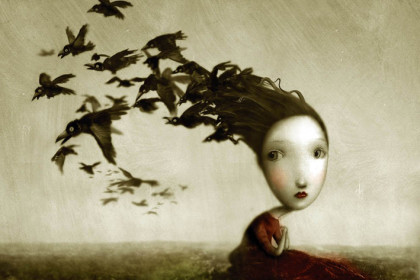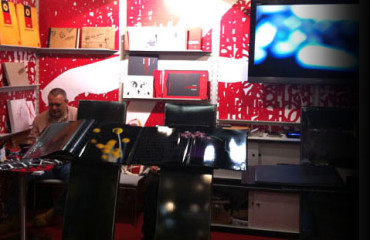
“My girls are all a bit Alice, struggling with a changing body, in a world in constant metamorphosis. A world that is illogical and uncontrollable in its very nature”.
Since 1997 Nicoletta Ceccoli illustrates children’s books: she does it experimenting with different techniques and materials (from airbrush to digital, from pencils to graphite), and especially creating characters that seem to come directly from fairy tales, but which, on closer inspection, have undergone metamorphosis along with their clothes, or are animated objects always a bit sad, sometimes even tragic. Not only books, though. Just think of one of her last roles: Nicoletta is in fact a concept artist for the movie La Mechanique du coeur written and directed by Mathias Melzieau and produced by Luc Besson, while exhibitions of her drawings are becoming more frequent, so much that she has been selected for a monographic exhibition in the Biennial of Drawing of Rimini, just ended.
At the center of her work there are the girls on the border with adolescence: the figures that exude a mischievous and unaware sensuality that mark the loss of innocence, the abandonment of a world made of toys that come to life for the last moments of sharing with their mistress, before being only objects empty of meaning. Empty for everyone, but not for the artist, who in her studio surrounds herself with picture books such as pop ups by Edward Gorey, The Dwindling Party or Puss in Boots, as well as toys of her childhood – she always loved dolls, she admits – and sweets of all kinds, also subject of many of her works. Every sweetness is ambiguous, seems to tell us Nicoletta Ceccoli: even cakes and sweets bear a message of pleasant consolation and at the same time a sense of guilt.
Among paradoxes and theatrical loneliness, the artist plays continuously, guided only by a total freedom of imagination that allows her to transform her skirts in floral bouquets or stuffed cakes in birdcages or in a blue sea from whose waves arise dragons. Observing works by Nicoletta Ceccoli means immersing yourself in a dreamlike atmosphere that leaves space for a model of “monstrous” beauty, and describes little lonely princesses, strong and independent, with unflappable air, deliberately hired to protect herself from emotions, to defend herself from dangers lurking beyond the dark backgrounds and behind sugary pastries. And the deeper meaning of the illustrations is what lies beneath all the stories: stories for children exist – paraphrasing what the artist wrote – to exorcise unconscious nightmares, to appease concerns, to overcome insecurities and existential crises. In a few words, to face life.
 English
English  Italiano
Italiano 



